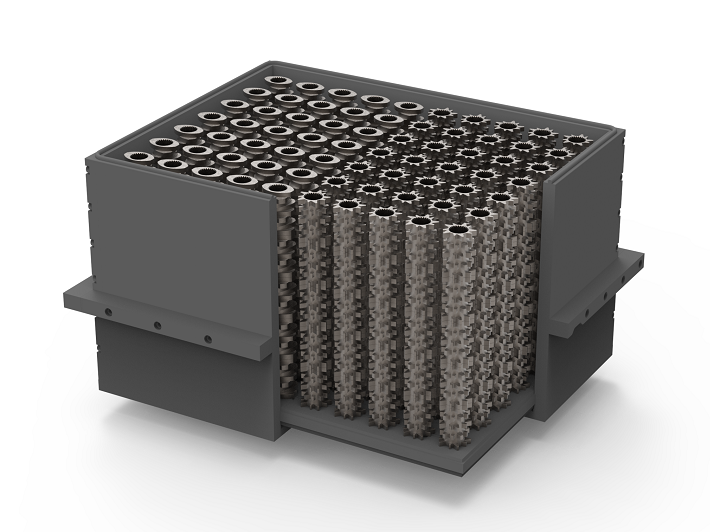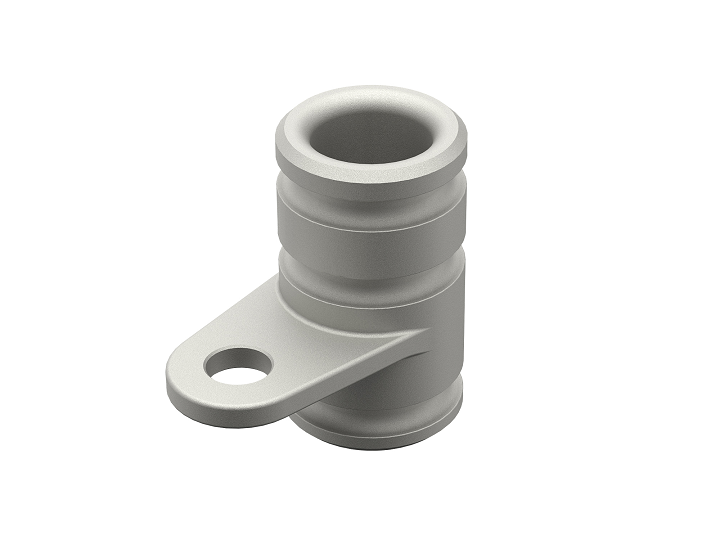Massachusetts-based Desktop Metal (NYSE: DM) recently announced the qualification of the latest material for its Production System, Grade 420 stainless steel (420 SS). By using the company’s patent-pending Single Pass Jetting (SPJ) technology, manufacturers can mass produce high-strength, end-use parts for industry applications like aerospace, defense, consumer products, and medical at a high rate of speed.
“Engineers continue to seek out metal additive manufacturing as a leading option to drive innovation in design and manufacturing. We believe our qualification of 420 SS and other high-strength alloys will accelerate the deployment of our AM 2.0 solutions among customers looking to successfully mass produce critical parts at scale,” explained Jonah Myerberg, Co-Founder and CTO of Desktop Metal.
Most recently, the 3D printing unicorn turned publicly-traded company qualified nickel superalloy IN625 for high-volume 3D printing on its industrial Production System platform, after also qualifying 316L stainless steel and 4140 low-alloy steel for the printer, which Desktop Metal refers to as “the world’s fastest way to 3D print metal parts at scale.”
The crystalline structure of stainless steels qualifies them into one of five main types: austenitic, ferritic, duplex, precipitation hardened, and martensitic. The 420 SS alloy falls into the last of these categories, which means it can be hardened and tempered through different ways of aging/heat treatment. Known for its hardness and high strength, 420 SS also has corrosion resistance, when in a fully hardened condition, to foods, freshwater, the atmosphere, and mild acids. Because of these features, the metal alloy is often used for applications like ball bearings, high-end cutlery, hand tools, surgical and dental instruments, fasteners, gear shafts, pump and valve components, and gauges.
One major application is in the medical and surgical sectors. To give surgeons better visibility, precision, and range of motion, robotic surgical systems are often used in medical procedures. These systems have many tiny, intricate parts making up their highly accurate motion systems. Desktop Metal’s Production System uses high-resolution binder jet printing, which is a good choice for creating the delicate features of robotic surgical instruments, like a locking articulation bar.
The high hardness and excellent corrosion resistance of 420 SS make it an ideal material for these types of medical components, and because it requires no tooling, volume production printing can start right away, which majorly saves on cost and time.
Another application for Desktop Metal’s high-volume 420 SS 3D printing is in the aerospace industry, specifically valve nozzle adapters, which are used to connect fluid systems and nozzles together and often require multiple versions to be able to work with different nozzle sizes and diameters. The newly qualified alloy is good for printing these because of its high hardness and corrosion resistance and the fact that no tooling is required, meaning multiple adapter geometries and sizes can be printed in the same build, as the Production System can support competitive high-volume manufacturing and can print thousands at the same time.
Used for compounding, mixing, and processing viscous materials, twin screw extruder mixing elements are another high-volume 3D printing application for Desktop Metal’s Production System and newly qualified 420 SS. Complex lobes are around the exterior of the part’s spline, which has to be optimized for proper material extrusion; this means a unique mixing element for every different material. However, instead of using multiple advanced machining techniques, setups, and custom fixturing, the Production System’s binder jet process makes the whole thing much more simple.
Again, the material’s corrosion resistance and high hardness are what make it a good choice for this application, and large volumes of different mixing elements can be printed in each build, which, again, saves a lot on lead time and costs for production purposes when compared to machining.
The materials science team at Desktop Metal has qualified and fully characterized 420 SS, 3D printed on its Production System, and meets Metal Powder Industries Federation (MPIF) 35 standards for structural powder metallurgy parts.
Subscribe to Our Email Newsletter
Stay up-to-date on all the latest news from the 3D printing industry and receive information and offers from third party vendors.
You May Also Like
3D Printing Financials: Fathom Struggles in Financial Quicksand During Critical Transition
Facing a year of key transitions and financial pressures, Fathom (Nasdaq: FTHM) has filed its annual report for 2023 with the U.S. Securities and Exchange Commission (SEC). The document outlines...
Latest Earnings Overview for Australian 3D Printing Firms Titomic and AML3D
Australian 3D printing manufacturing firms Titomic (ASX: TTT) and AML3D (ASX: AL3) reported their financial results for the period from July to December 2023, marking the first half of their...
3D Printing Webinar and Event Roundup: April 7, 2024
Webinars and events in the 3D printing industry are picking back up this week! Sea-Air-Space is coming to Maryland, and SAE International is sponsoring a 3D Systems webinar about 3D...
3D Printing Financials: Unpacking Farsoon and BLT’s 2023 Performance
In the Chinese 3D printing industry, two companies, Farsoon (SHA: 688433) and Bright Laser Technologies, or BLT (SHA: 688333), have recently unveiled their full-year earnings for 2023. Farsoon reported increases...




































